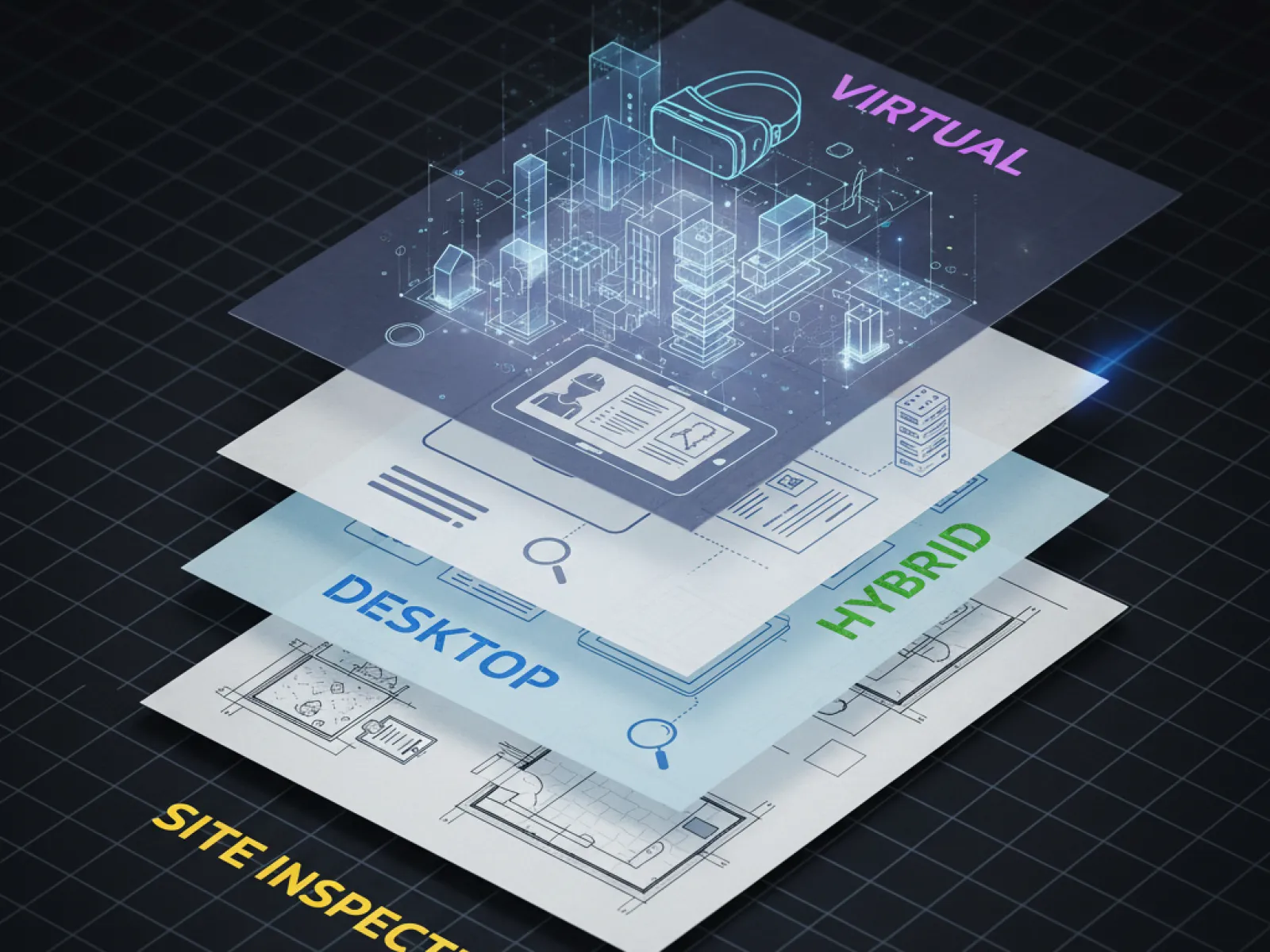
Balancing Accuracy and Cost: Selecting the Right Insurance Appraisal Program

GA Group offers several approaches for establishing insurance replacement cost.
Some of the most common are: Full Site Inspections (List and Price Method), Hybrid Inspections, Desktop Studies, Sampling Programs, and Virtual Inspections.
Each has its place—and its price point—depending on client objectives, risk profile, budget, and other cost-containment opportunities.

Full Site Inspection & Appraisal (List and Price Method)
A full site inspection (list and price method) is the gold standard for insurance valuations. An experienced appraiser physically visits each location, walks the site, and inspects every building, piece of equipment, and land improvement. Data is captured for building size, construction type, roof systems, equipment details, and more. The inspection can be performed according to industry standard thresholds or tailored to the insured's need for detail.
Advantages:
Highest Accuracy: Real-time verification of building dimensions, construction quality, and occupancy. The appraiser can confirm make, model, and capacity of key equipment to ensure accurate replacement costs.
Validate and Improve Confidence: Spot errors in square footage or construction type and verify changes in equipment — giving risk managers and underwriters greater confidence.
Identify Risks Beyond Value: Help identify missing or untracked assets and eliminate 'ghost assets' in records. Additional benefit is realized for financial and tax reporting objectives.
Photographic Documentation: Provides useful visual records for claims and future hybrid or desktop approaches.
Best For: Large, complex, or high-value sites such as hospitals, data centers, power plants, or manufacturing facilities or when accurate, defendable values are needed.

Hybrid Site Inspections (Limited Onsite + Client Data)
Hybrid inspections blend limited onsite verification with client-provided data. The appraiser inspects selected high-value assets and uses that data to calibrate and adjust insurable values.
Advantages:
Cost Efficient: Reduces travel costs while still providing field verification.
Balanced Accuracy: Trending factors are anchored to actual site data.
Best For: Clients with high confidence in current data but are seeking to refresh values between full appraisal cycles with higher assurance.

Full Desktop Study
A desktop appraisal relies on client data such as drawings, past appraisals, and fixed asset registers. Published indices are leveraged to trend replacement cost forward to the present.
Advantages:
Fast Turnaround: Ideal when deadlines are tight.
Budget-Friendly: No travel costs or site time required.
Good Interim Solution: Maintains value credibility between full inspections.
Limitations:
Less accurate if data is outdated or incomplete.
Building quality and/or equipment key information is less likely to be confirmed.

Sampling Inspection Program
For large portfolios, a statistically valid sample (often 10-25% - of each occupancy) of sites is inspected and used to bring forward the remainder of the portfolio.
Advantages:
Lower Cost: Reduces the need to inspect every site.
Field-Anchored Accuracy: Uses representative sites to build a credible value model.
Best For: Utilities, retail chains, logistics networks, or school districts.

Virtual Site Inspection
Virtual inspections use video calls, client-submitted photos, or 360° camera footage instead of in-person visits. The appraiser directs the client's representative to capture key images and information.
Advantages:
Cost & Time Savings: Eliminates travel.
Safety & Accessibility: Ideal for remote or restricted sites.
Keeps Projects Moving: Works well when timing is tight.
Limitations:
Quality depends on client participation.
Hidden conditions may be missed.
Choosing the Right Approach
Selecting the right appraisal approach is about balancing accuracy,
cost, and risk tolerance.
- Insurance programs that are new or property with a history of underinsurance may require a full site inspection.
- Large, stable portfolios may benefit from hybrid, sampling, or desktop approaches with periodic full inspections every 3 years.
A well-designed program often uses a mix of methods:
perform a full inspection in Year 1, use hybrid or desktop updates in Years
2-4, then repeat the full inspection cycle. This keeps values credible and
ensures data remains current.
If you'd like to discuss which approach is right for your
organization — whether a full onsite appraisal, a hybrid program, or a
portfolio refresh — GA Group is happy to help. Reach out to start a
conversation and ensure your property values are accurate, defensible, and
ready for renewal.


